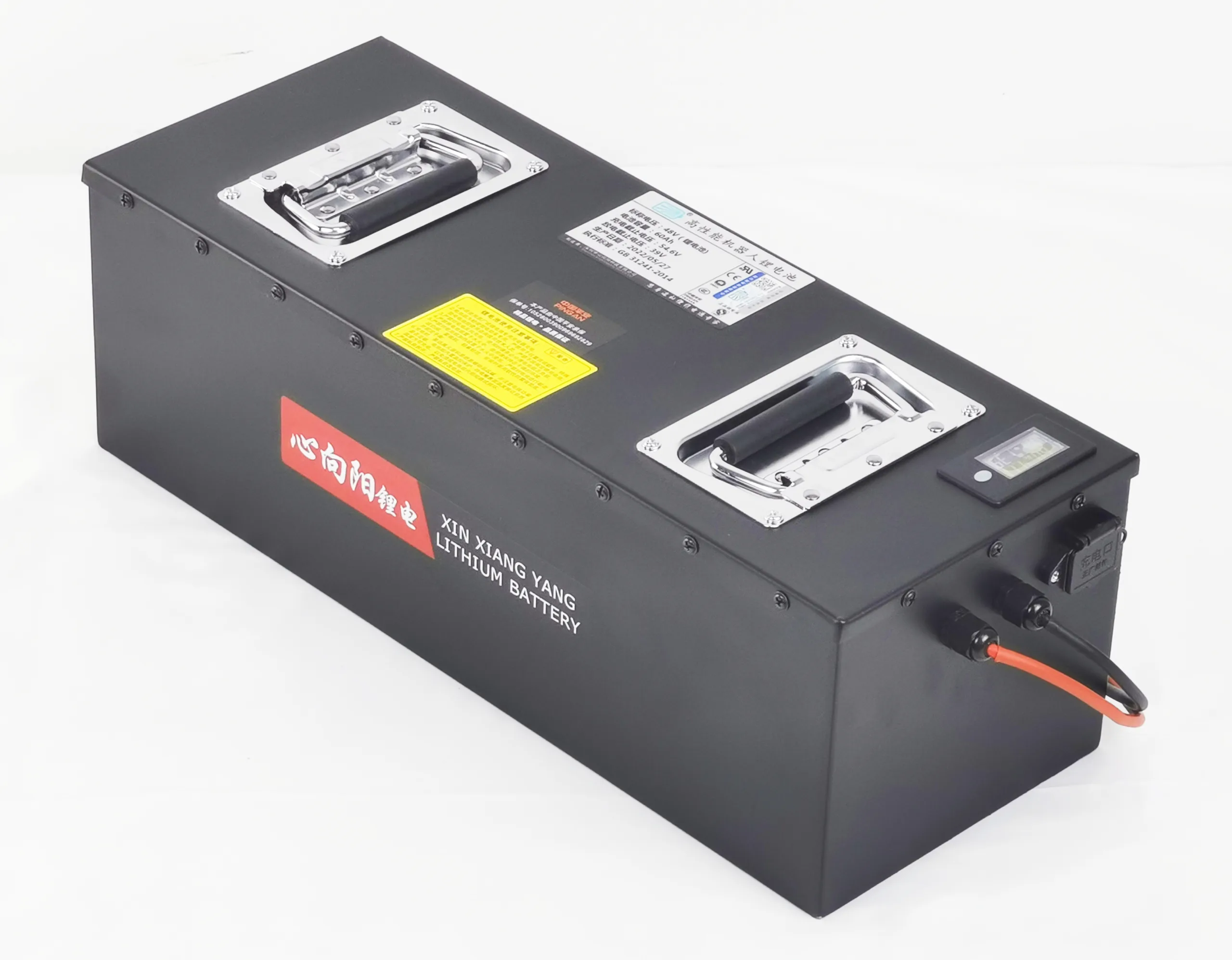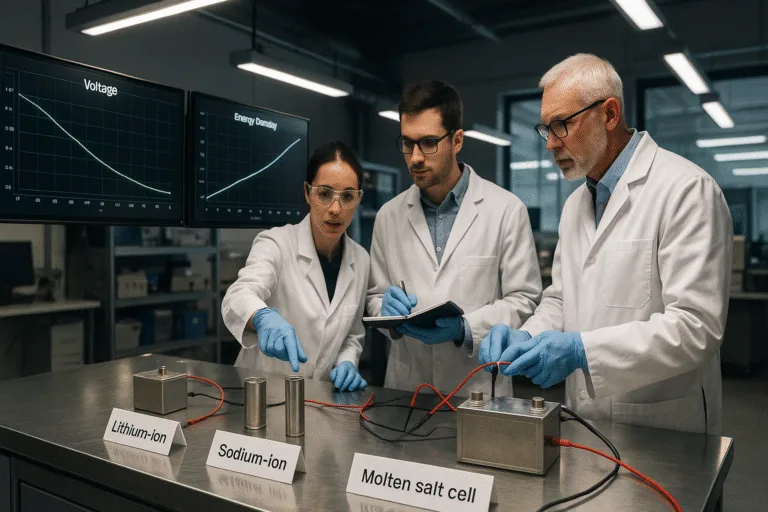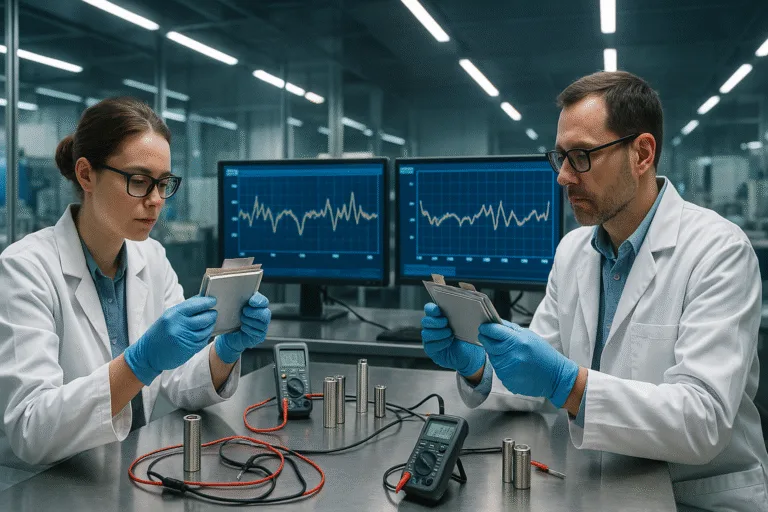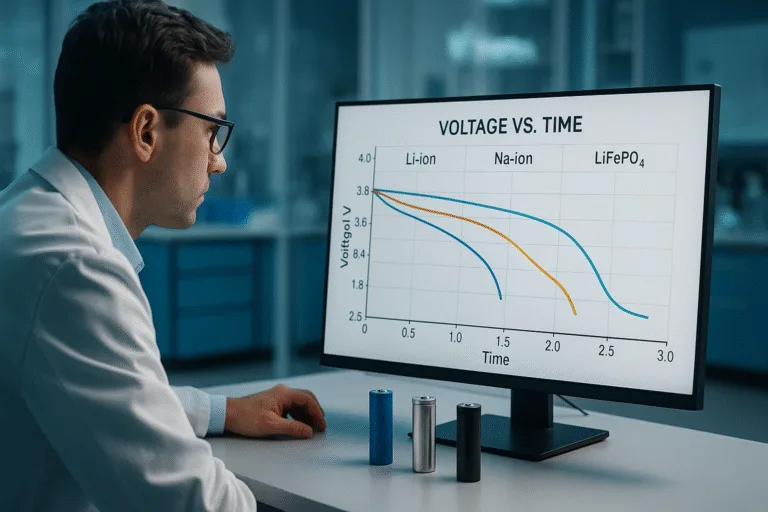
Are you confused about choosing the correct charger for your LiFePO₄ battery? Using the wrong one can damage your investment. We know the importance of safe and efficient charging. Imagine extending your battery’s life and ensuring peak performance with the right charger.
Choosing the right LiFePO₄ battery charger requires matching the charger’s voltage and current output to your battery pack’s specifications. A dedicated LiFePO₄ charger uses a precise charging algorithm that protects the battery and optimizes its lifespan.
I learned early on that not all chargers are created equal. Using the correct charger is not just about convenience; it’s about protecting your battery and ensuring its longevity. Let’s delve into the details of selecting the perfect charger.
What’s the difference between a LiFePO₄ battery charger and a regular lithium charger?
Have you ever wondered why LiFePO₄ batteries need special chargers? It is a common question. The differences are crucial for battery health and safety.
A LiFePO₄ battery charger1 is specifically designed for lithium iron phosphate2 chemistry, featuring a precise charging voltage3 (e.g., 3.65V per cell) and a two-stage (CC/CV) algorithm4 without a float charge5. A regular lithium-ion charger, however, typically uses a higher final voltage (e.g., 4.2V per cell) and different algorithms suited for other lithium chemistries like NMC6.
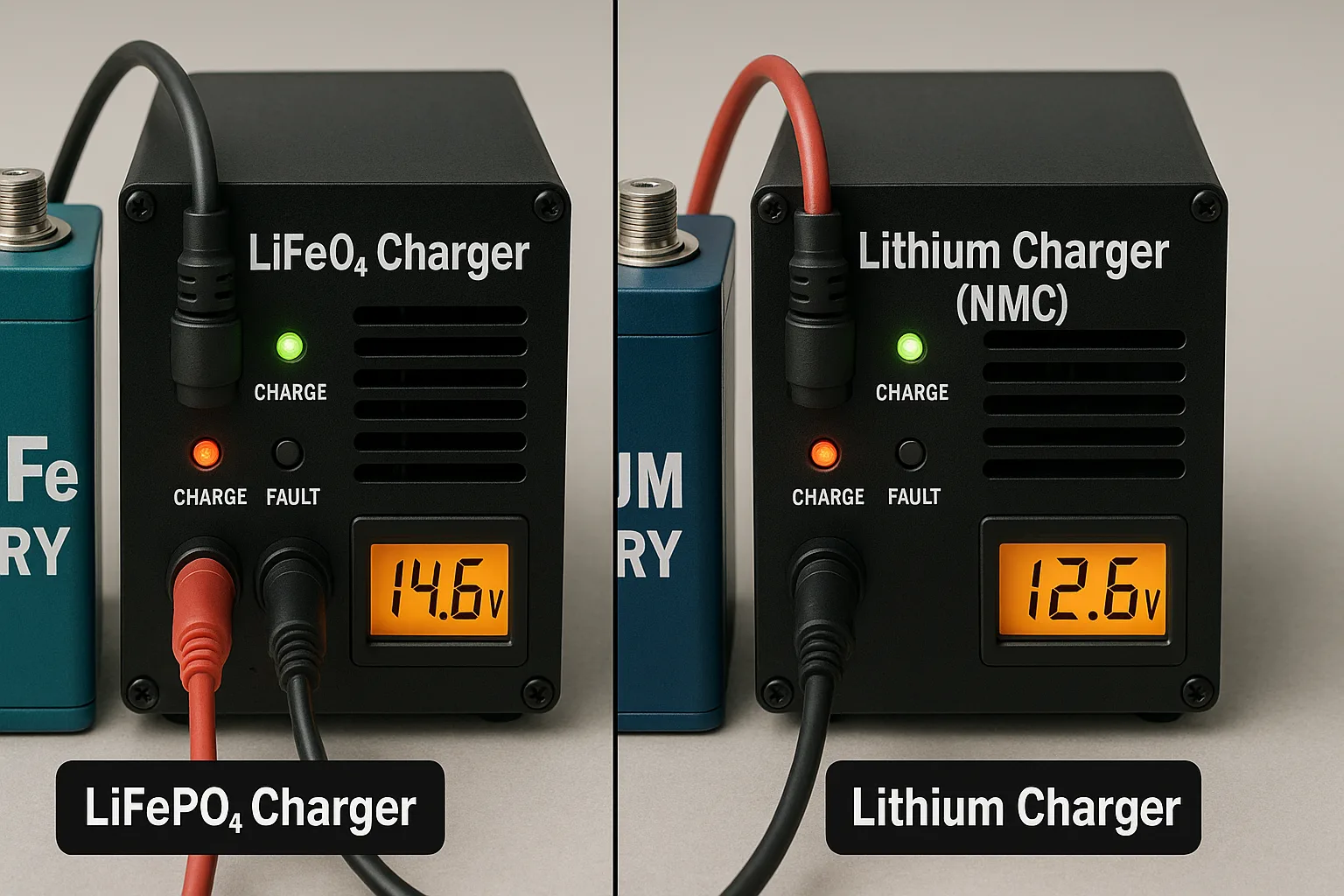
Different Chemistries, Different Needs
LiFePO₄ batteries have a unique chemical makeup. This means they have different charging voltage requirements compared to other lithium-ion batteries like those found in your phone or laptop (which are often Lithium Cobalt Oxide or Lithium Nickel Manganese Cobalt Oxide).
- LiFePO₄: Typically charges to 3.65 volts per cell. A 12V LiFePO₄ pack (4 series cells) charges to around 14.6V.
- Other Lithium-ion (e.g., NMC): Typically charges to 4.2 volts per cell. A common 12V lithium-ion pack (3 series cells) charges to around 12.6V, but specific cell configurations might differ.
Precise Charging Algorithms
A good charger uses a specific charging method, or algorithm.
- LiFePO₄ Chargers: They often use a Constant Current (CC) phase followed by a Constant Voltage (CV) phase. Once the battery reaches its peak voltage, the current tapers off to zero. They generally do not use a float charge5 stage, unlike some other chemistries or lead-acid batteries7.
- Regular Lithium Chargers: While they also use CC/CV, their voltage setpoints are different. Some may include a small "trickle" or "float" charge to maintain full capacity, which is generally not ideal for LiFePO₄ and can shorten its lifespan.
| Feature | LiFePO₄ Charger | Regular Lithium (Li-ion/NMC) Charger |
|---|---|---|
| Chemistry | Lithium Iron Phosphate | Various Lithium-ion (e.g., NMC, LCO) |
| Max Cell Voltage | ~3.65V per cell | ~4.2V per cell |
| Charging Algorithm | CC/CV, no float | CC/CV, sometimes with float |
| Voltage Output (for 12V pack) | ~14.6V (for 4S LiFePO₄) | ~12.6V (for 3S Li-ion) or higher (for other configurations) |
| Safety | Optimized for LiFePO₄ stability | Designed for other lithium chemistries |
Can I use a lithium charger to charge a LiFePO₄ battery safely?
Are you wondering if you can use an existing lithium charger for your LiFePO₄ battery? It’s a common temptation. However, it comes with important risks.
It is generally not recommended to use a regular lithium-ion charger to charge a LiFePO₄ battery safely, due to different voltage requirements and charging algorithms. Using an incompatible charger can lead to overcharging8, reduced battery lifespan, or potential safety hazards like overheating.
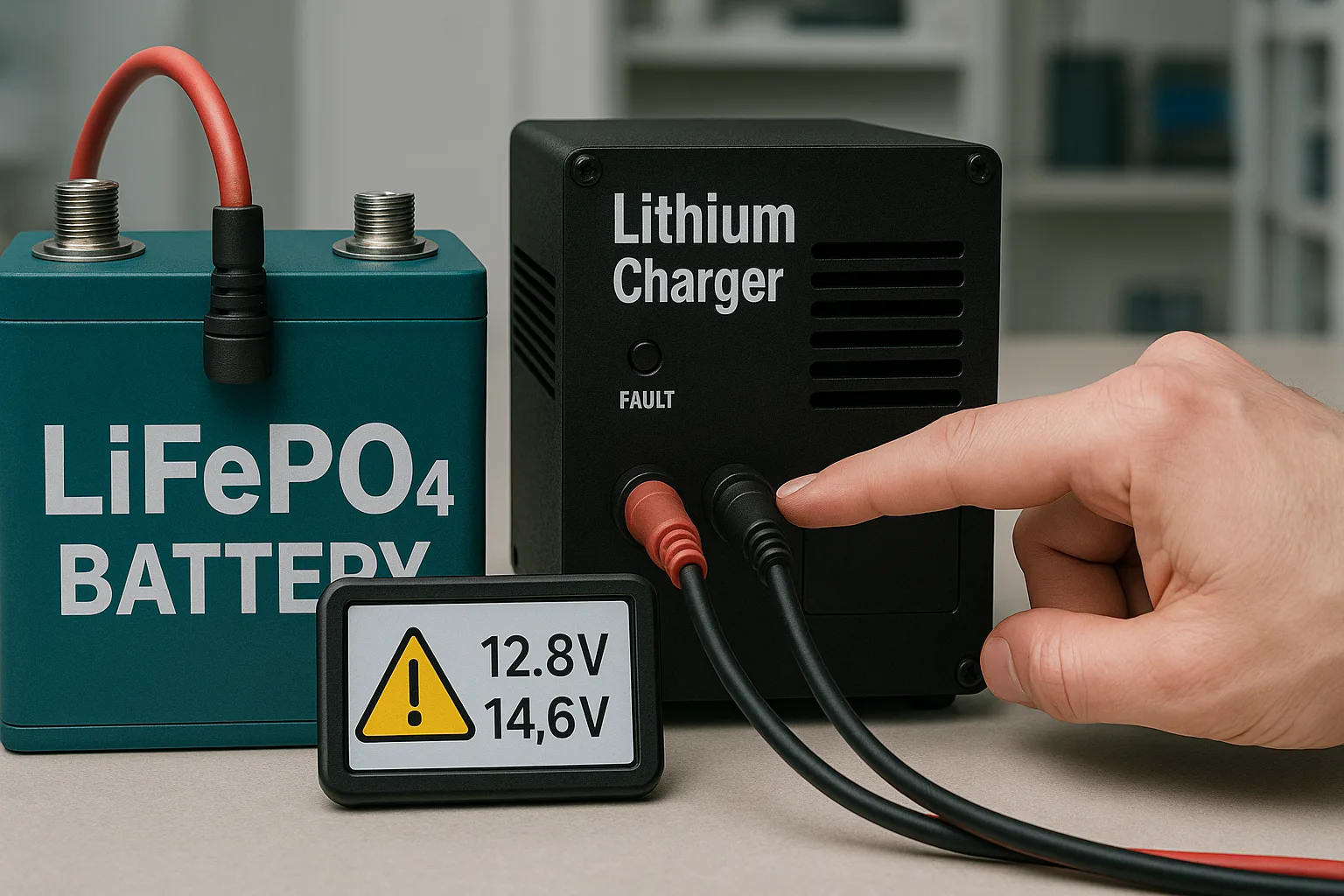
The Risk of Overcharging
The biggest danger is overcharging. A standard lithium-ion charger often charges to a higher voltage (e.g., 4.2V per cell) than a LiFePO₄ battery needs (3.65V per cell). If you force a LiFePO₄ battery to charge to a higher voltage, it will overcharge. This can damage the cells. It reduces their lifespan and can even cause safety issues.
Incompatible Charging Algorithms
Beyond voltage, the charging "behavior" of the charger matters.
- Lack of Specific Protection: Regular lithium chargers may not have the specific current and voltage control profiles needed for LiFePO₄ batteries.
- No Proper Cut-off: They might not cut off charge at the precise voltage required for LiFePO₄, leading to continued overcharging.
- Float Charge Issues: Some lithium-ion chargers apply a trickle or float charge. LiFePO₄ batteries generally do not benefit from this. It can actually cause cell degradation over time.
Exceptions and Precautions
In some rare cases, a very advanced, programmable charger might work. This is only if you can precisely set the voltage and current limits to match LiFePO₄ requirements. However, this is for experts. For most users, it is best to use a dedicated LiFePO₄ charger. Your battery’s built-in Battery Management System (BMS)9 does offer protection, but it’s always safer to use the correct charger to avoid relying solely on the BMS for every charge cycle.
What should I know about using a 48V LiFePO₄ battery charger?
Are you working with a 48V LiFePO₄ battery10 system? Choosing the right charger for this voltage is important. It ensures your larger system runs smoothly.
When using a 48V LiFePO₄ battery charger, you should confirm its output voltage is approximately 58.4V, ensure it delivers sufficient current (Amps) for your battery capacity, and verify it uses a LiFePO₄-specific charging profile11 to prevent overcharging and maximize battery lifespan.
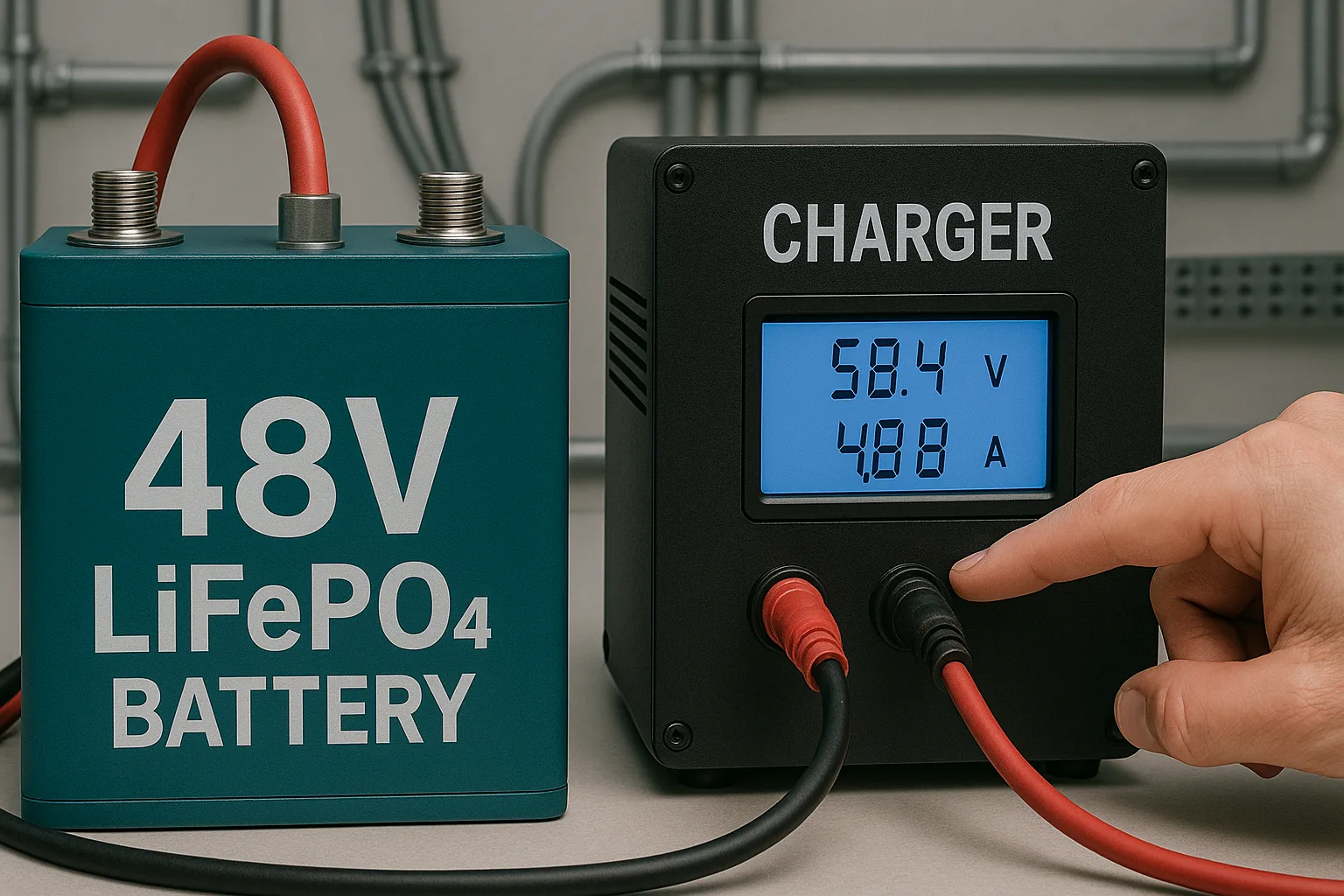
Matching Charger Voltage to Battery Pack
A 48V LiFePO₄ battery pack typically consists of 16 individual 3.2V LiFePO₄ cells connected in series (16S). Therefore, its full charge voltage is usually 16 cells * 3.65V/cell = 58.4V. Your 48V charger must be designed to reach this precise voltage. A charger with a lower voltage will not fully charge the pack. A higher voltage charger will overcharge it.
Current (Amps) and Charging Time
The charger’s current output (Amps)12 determines how fast your battery pack charges.
- Recommended Current: A good rule of thumb is to choose a charger with a current rating between 0.2C and 0.5C. For example, a 48V 100Ah battery pack might use a 20A to 50A charger.
- Charging Time: To estimate charging time13, divide your battery’s Ah capacity by the charger’s Amps. (e.g., 100Ah / 20A = 5 hours). Choosing a higher Amp charger means faster charging.
- Avoid Excessive Current: Do not exceed the maximum charge rate recommended by your battery manufacturer. Over-current charging can cause excessive heat and damage cells.
Charging Profile and BMS Compatibility
Ensure the charger has a LiFePO₄ specific charging profile11 (CC/CV). Also, consider how the charger interacts with your battery pack’s internal BMS. A good charger works together with the BMS for optimal protection. Our BMS units are designed to cooperate seamlessly with appropriate chargers.
Are LiFePO₄ chargers compatible with other battery chemistries?
Do you own batteries with different chemistries? You might wonder if one charger can do it all. The answer is usually no, for good reasons.
Generally, LiFePO₄ chargers are not compatible with other battery chemistries like lead-acid, NiMH, or other lithium-ion types (e.g., NMC) because each chemistry requires a distinct charging voltage and specialized charging algorithm to ensure safe and efficient operation.

Unique Charging Requirements
Every battery chemistry14 has its "sweet spot" for charging. Trying to charge a different type of battery with a LiFePO₄ charger can cause problems.
- Lead-Acid Batteries (SLA, AGM, Gel): These batteries have different voltage profiles and often use float charging. A LiFePO₄ charger’s higher peak voltage or lack of a float stage can damage them.
- Nickel-Metal Hydride (NiMH)15 / Nickel-Cadmium (NiCd): These chemistries use completely different charging methods, often relying on voltage drop detection or temperature rise to signal full charge. A LiFePO₄ charger is not designed for this.
- Other Lithium-ion Chemistries (NMC, LCO): As discussed, these require higher final charge voltages (e.g., 4.2V/cell) than LiFePO₄ (3.65V/cell). Using a LiFePO₄ charger on these would result in undercharging. The battery would not reach full capacity. Conversely, using a charger designed for these on a LiFePO₄ battery would overcharge it.
The Importance of Specificity
Battery charging is a precise process. Using the wrong charger is like trying to fit a square peg in a round hole. It might seem to work for a short time, but it will lead to reduced lifespan, poor performance, or even safety risks. Always use a charger that explicitly states compatibility with "LiFePO₄" chemistry. Some advanced universal chargers16 exist, but they must have specific selectable modes for LiFePO₄.
Conclusion
Choosing the right LiFePO₄ charger means matching its voltage and current. Dedicated LiFePO₄ chargers are vital due to unique charging algorithms. Avoid using them for other battery types. For 48V packs, verify the 58.4V output. The correct charger protects your investment and ensures optimal performance.
-
Explore this link to understand the specific design and features of LiFePO₄ battery chargers. ↩
-
Learn about lithium iron phosphate chemistry and its advantages in battery technology. ↩
-
Discover the importance of charging voltage for battery health and performance. ↩
-
Understand how the CC/CV algorithm works and its significance in battery charging. ↩
-
Find out how float charging affects battery lifespan and performance. ↩ ↩
-
Explore the NMC chemistry and its applications in lithium-ion batteries. ↩
-
Learn about lead-acid batteries and their charging requirements. ↩
-
Learn about the dangers of overcharging and how to prevent it. ↩
-
Discover the role of BMS in battery safety and performance. ↩
-
Understand the specifications and applications of 48V LiFePO₄ battery systems. ↩
-
Learn about the importance of a proper charging profile for battery health. ↩ ↩
-
Explore how current output influences charging speed and battery safety. ↩
-
Find out how to estimate charging time based on battery capacity and charger output. ↩
-
Understand the significance of battery chemistry in selecting the right charger. ↩
-
Discover the characteristics and charging methods of NiMH batteries. ↩
-
Explore the features and limitations of universal chargers for different battery types. ↩

